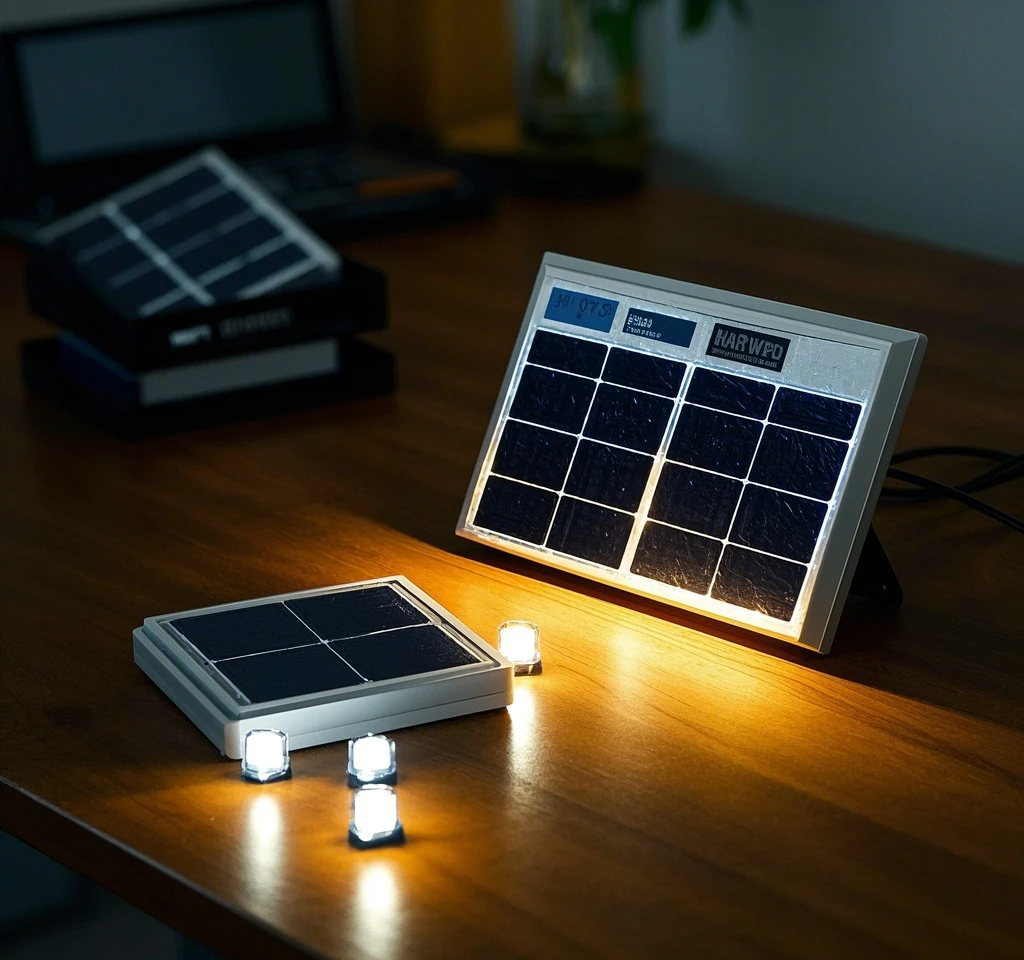Solar energy is revolutionizing the way we power our world, and at the heart of this transformation are solar panels, the critical components that convert sunlight into electricity. Among the various types, monocrystalline and polycrystalline solar panels dominate the market. But why do monocrystalline panels often come with a higher price tag? How much do their efficiencies differ? This article dives into the science, technology, and economics behind these two types of solar panels, offering a comprehensive guide for homeowners, businesses, and renewable energy enthusiasts.

Understanding Solar Panel Technology
Solar panels operate on the photovoltaic effect, where photovoltaic cells absorb sunlight to generate electricity. The efficiency and cost of a solar panel depend heavily on the type of silicon used in its construction. Silicon, the primary material in most solar panels, comes in two main forms: monocrystalline and polycrystalline. Each has distinct characteristics that influence their performance, cost, and application.
What Are Monocrystalline Solar Panels?
Monocrystalline solar panels are made from a single, continuous crystal structure of silicon. The manufacturing process, known as the Czochralski method, involves growing a single silicon crystal, which is then sliced into thin wafers. This process results in a uniform, high-purity crystal that enhances the panel’s ability to convert sunlight into electricity.
- Key Features: Monocrystalline panels are recognizable by their dark, almost black appearance and rounded edges. Their single-crystal structure minimizes electron recombination, leading to higher solar panel efficiency.
- Efficiency Range: Typically, monocrystalline panels achieve efficiencies between 18% and 22%, with top-tier models reaching up to 24%.
- Advantages: Higher efficiency, better performance in low-light conditions, and a sleek aesthetic make them ideal for space-constrained installations.
What Are Polycrystalline Solar Panels?
Polycrystalline solar panels, also known as multicrystalline, are made from multiple silicon crystals melted together and formed into a single wafer. This process is less complex and uses less energy than monocrystalline production, resulting in a lower cost.
- Key Features: These panels have a blue, speckled appearance due to the multiple crystal structures. The presence of grain boundaries can slightly reduce electron flow, impacting efficiency.
- Efficiency Range: Polycrystalline panels typically offer efficiencies between 15% and 18%, with some advanced models reaching 20%.
- Advantages: Lower production costs make polycrystalline panels more budget-friendly, suitable for large-scale installations where space is not a constraint.
Why Are Monocrystalline Panels More Expensive?
The price difference between monocrystalline and polycrystalline solar panels stems from several factors, primarily related to manufacturing and performance.
Manufacturing Process
The Czochralski process used for monocrystalline panels is energy-intensive and time-consuming. Growing a single, high-purity silicon crystal requires precise conditions, increasing production costs. In contrast, polycrystalline panels are made by melting multiple silicon fragments together, a simpler and less costly process. This difference in manufacturing complexity directly impacts the cost of the final product, with monocrystalline panels often priced 10-20% higher per watt.
Material Efficiency and Waste
Monocrystalline production generates more silicon waste due to the need to cut circular wafers into square shapes for panel assembly. This waste increases material costs. Polycrystalline panels, however, utilize nearly all the silicon in the mold, reducing waste and further lowering costs.
Performance and Market Demand
The higher solar panel efficiency of monocrystalline panels makes them more desirable for residential and commercial applications where space is limited. This demand drives up their price. Additionally, their sleek appearance and longevity (often backed by 25-year warranties) add to their premium positioning in the market.

Efficiency Comparison: Monocrystalline vs. Polycrystalline
One of the most critical factors for consumers is the conversion efficiency of solar panels. Monocrystalline panels consistently outperform polycrystalline panels in this regard.
- Monocrystalline Efficiency: As mentioned, these panels achieve 18-24% efficiency. Their single-crystal structure allows for better electron mobility, resulting in more electricity generated per square meter.
- Polycrystalline Efficiency: With efficiencies of 15-18%, polycrystalline panels produce slightly less power per unit area. The multiple crystal boundaries create resistance, reducing the overall efficiency.
To put this into perspective, a 1-square-meter monocrystalline panel with 20% efficiency generates 200 watts of power under standard test conditions (STC). A polycrystalline panel of the same size with 16% efficiency generates 160 watts. This 20-25% efficiency gap can significantly impact energy output over the panel’s lifetime, especially in space-limited installations.
Real-World Implications
The efficiency difference translates to practical outcomes. For example, a rooftop with limited space may require fewer monocrystalline panels to achieve the same energy output as a larger number of polycrystalline panels. This can reduce installation costs and complexity, offsetting the higher upfront cost of monocrystalline panels. However, for large solar farms where space is abundant, polycrystalline panels may be more cost-effective due to their lower price per watt.
Other Factors Influencing Cost and Performance
Beyond efficiency and manufacturing, several other factors influence the choice between monocrystalline and polycrystalline panels.
Temperature Coefficient
The temperature coefficient measures how well a solar panel performs in high temperatures. Monocrystalline panels generally have a lower temperature coefficient (e.g., -0.3% to -0.4% per °C), meaning they lose less efficiency in hot climates compared to polycrystalline panels (-0.4% to -0.5% per °C). This makes monocrystalline panels more suitable for regions with high ambient temperatures.
Durability and Lifespan
Both panel types are durable, typically lasting 25-30 years. However, monocrystalline panels often come with slightly better warranties due to their higher purity and manufacturing quality. Their degradation rate (the annual loss in efficiency) is also marginally lower, ensuring long-term performance.
Aesthetic Considerations
For residential users, aesthetics can play a role. Monocrystalline panels’ uniform black appearance is often preferred for its sleek, modern look, especially on rooftops. Polycrystalline panels’ blue, speckled design may be less visually appealing but is less noticeable in large-scale installations.
Innovations in Solar Panel Technology
The solar industry is rapidly evolving, with innovations closing the gap between monocrystalline and polycrystalline panels. For instance, half-cut cells and bifacial panels are now used in both types to boost efficiency. Half-cut cells reduce electrical resistance, while bifacial panels capture sunlight on both sides, increasing energy yield by 5-20%.
Additionally, advancements in passivated emitter and rear cell (PERC) technology have improved the efficiency of both monocrystalline and polycrystalline panels. PERC layers reduce electron recombination, pushing efficiencies closer to 22% for polycrystalline and 24% for monocrystalline panels.
Emerging technologies, such as heterojunction (HJT) and TOPCon cells, are further enhancing monocrystalline panel performance, with efficiencies exceeding 25% in some cases. While these innovations increase costs, they also improve long-term energy savings, making monocrystalline panels even more attractive for high-efficiency applications.
Choosing the Right Solar Panel for Your Needs
Selecting between monocrystalline and polycrystalline solar panels depends on several factors:
- Budget: If upfront cost is a primary concern, polycrystalline panels offer a more affordable option, especially for large installations.
- Space Constraints: For limited spaces, such as residential rooftops, monocrystalline panels’ higher efficiency makes them the better choice.
- Climate: In hot climates, monocrystalline panels’ lower temperature coefficient ensures better performance.
- Aesthetics: Homeowners prioritizing appearance may prefer monocrystalline panels for their sleek design.
To make an informed decision, consult with a reputable solar installer who can assess your energy needs, site conditions, and budget. Tools like solar calculators can also help estimate long-term savings and payback periods.
Conclusion
Solar panels are the backbone of the renewable energy revolution, and understanding the differences between monocrystalline and polycrystalline options is key to making an informed investment. While monocrystalline panels command a higher price due to their superior efficiency, durability, and aesthetics, polycrystalline panels remain a cost-effective choice for budget-conscious consumers or large-scale projects. By weighing factors like efficiency, cost, and installation constraints, you can choose the panel type that best suits your needs, contributing to a sustainable future powered by solar energy.


Leave a Reply